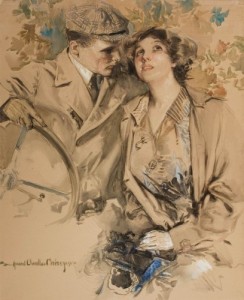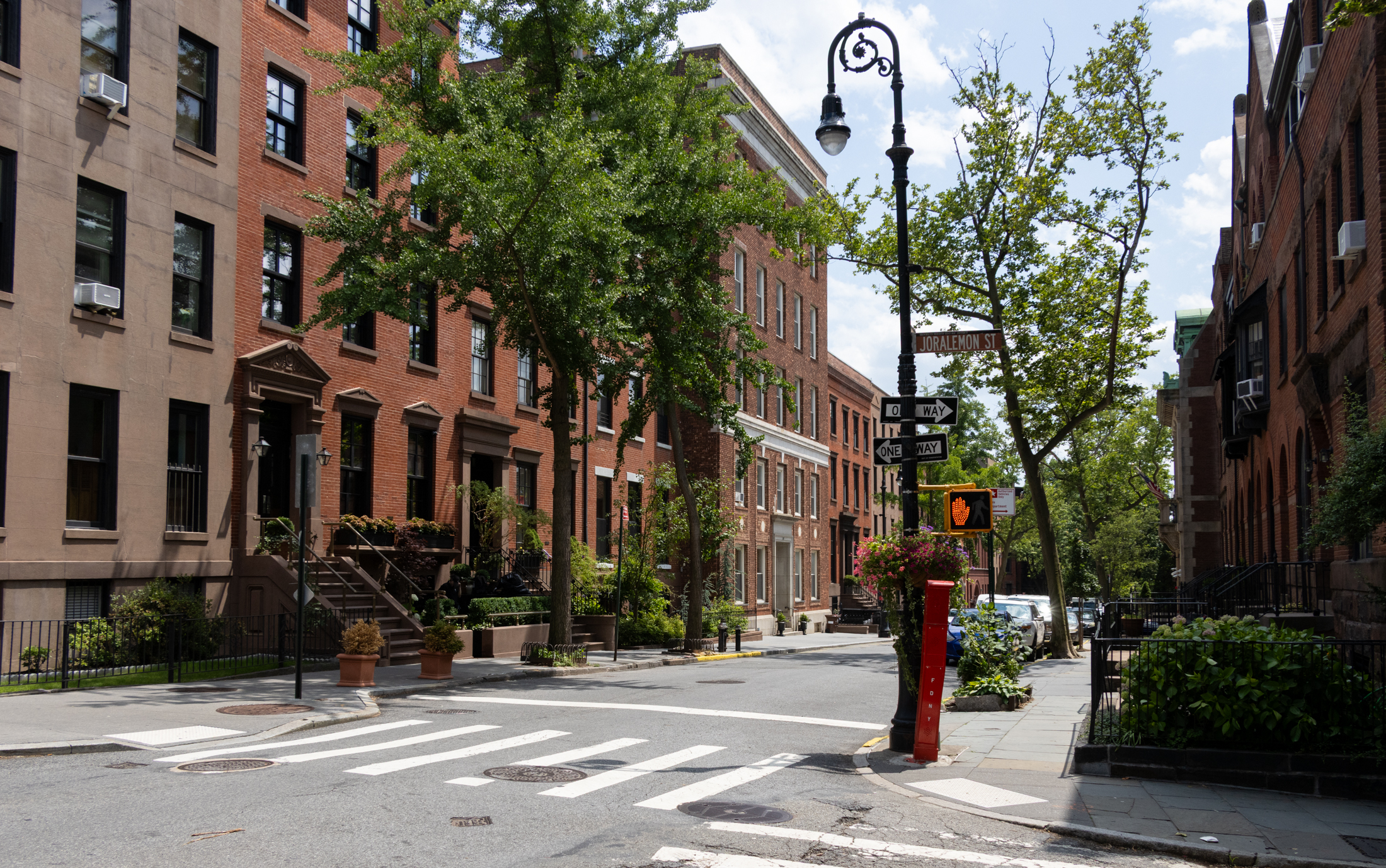Walkabout: Trains, Automobiles and Undying Love, Part 2
Read Part 1 of this story. “Can it get any worse?” That’s what Dwight Pardee probably asked his wife Mary, after their oldest child had the details of his very short and very public bad marriage published in newspapers across the country in 1909 and 1910. Dwight W. Pardee was the Secretary of Cornelius Vanderbilt’s…


Read Part 1 of this story.
“Can it get any worse?” That’s what Dwight Pardee probably asked his wife Mary, after their oldest child had the details of his very short and very public bad marriage published in newspapers across the country in 1909 and 1910. Dwight W. Pardee was the Secretary of Cornelius Vanderbilt’s New York Central Railway, and twenty year old Roy Pardee was a young man in love with a pretty girl and the idea of marriage.
His whirlwind marriage to twenty-two year old Lillian Beasley, a supposed recent widow and current chorus girl, resulted in twenty days of wedded bliss, ended by her spending, and his suspicions of her wandering eye, and finally a messy divorce, with the details written for all of the country to read. For all the details on this juicy story, and the early story of Brooklyn’s Pardee family, check out Part one of our story.
If Mary Pardee had been clairvoyant, she might have answered her husband by saying, “You think this is bad? You haven’t seen anything yet, my dear. Our daughter is going to make even bigger headlines than Roy ever could.” And so she did.
The Pardees lived at 1310 Dean Street, in the St. Marks District, now Crown Heights North. Like many wealthy people, they also had a summer home, this one in Bay Shore, Long Island. With all of the mess going on with young Roy, the Pardees found themselves out in Bay Shore a lot, escaping the prying eyes of the press and the curious.
Elsa Pardee was just nineteen, and was herself, tall, dark haired and pretty. She had just graduated from finishing school, and was looking forward to a summer with her friends, especially her best friend, Marion Van Kleek, who lived only three doors away from their Dean Street home, at 1316 Dean.
The Van Kleeks had their summer home upstate, at Lake George, and the girls planned to spend time at both cottages during the summer. The only problem was that the Pardees were short on a chauffeur.
In our first chapter, I told the tale of Mr. Pardee, his chauffeur, James Kilmurray, and their run in with Judge Higgenbotham of the Magistrate’s court. Perhaps because of that incident, James Kilmurray was gone, and the family was in need of a driver.
As they were enjoying their stay in Bay Shore, Dwight Pardee mentioned his need for a chauffeur to some local friends who recommended young Kenneth Lee Collins. He was twenty-three, a local boy, and great with cars. He had been working at a garage fixing automobiles, and had high recommendations from his peers and employers.
Pardee met and interviewed Collins, and he was hired. This all happened in 1909, while Roy was in the middle of his very public bad marriage, separation and divorce. Elsa was left alone for a great deal of the time, as the parents went back and forth into the city, and Elsa began going for long rides along the Long Island Shore, just herself and Kenneth Collins.
As any romance novel will tell you, it was inevitable. They fell in love. For a while, no one noticed, not that anyone was really paying attention with Roy acting the fool. But if the Pardees were blind, their friends and neighbors were not. Someone brought the relationship to the attention of Elsa’s father, and he called both of them into his study for an explanation.
Dwight Pardee was not in charge of a huge railroad operation because he was unorganized. When the young sweethearts appeared before him, he told Kenneth Collins that he was not pleased with the relationship, and that he had hired him to drive the car, not court his daughter. Elsa professed her love for Collins, and begged her father to understand and respect their love.
Dwight countered with an offer. He gave Kenneth a train ticket to Chicago, and provided letters of recommendation and introduction to the railroad men there. If Kenneth could get a job, learn the business, far off in Chicago, and come back a success, then he’d listen to talk of courting his daughter. But he warned him: no success, no Elsa.
Kenneth went to Chicago. According to his comments later, Kenneth said the railroad men had been predisposed against him, and he was not able to learn the business, or even keep a job. Unbeknownst to Pardee, Kenneth soon came back to New York.
His first move was to call Elsa. They met, and decided to run off and elope. On July 1, 1910, Elsa came back to Brooklyn and met with her friend, Marion Van Kleek. The two girls met up with Kenneth, and went to Jersey City, where the couple found a Justice of the Peace to marry them, with Marion as the witness.
Love had triumphed over class and wealth. Or so they probably thought. But gossip about big news like this has a way of getting out, no matter how careful you are, and soon tongues were wagging on Dean Street and in Bay Shore, and by the middle of July, word came to Dwight and Mary Pardee.
On the day in question, Elsa was supposed to be visiting Marion in Brooklyn, in preparation for the two girls going up to Lake George to the Van Kleek summer home. She came back to Bay Shore (married) and then went upstate. While she was gone, her father began searching for evidence that Elsa and Kenneth had gotten married.
He hired investigators to scour the marriage records in the immediate vicinity of New York City, and they found the records in Jersey City. Trying to fend off another public scandal, he called Elsa to come back home from Lake George, and parents and wayward daughter immediately took off for a long tour of the Western United States, in a private railroad car. That must have been quite the trip.
They tried to keep the marriage secret, but it didn’t stay that way for long. The press found out, and the Pardees found themselves on the front page of the papers once again. Roy, who really should have had nothing to say on the matter, telegraphed his father out west to tell them that “The cat was out of the bag.”
He also opined to the reporters, saying, “It’s tough on the governor to have her spring this just after my affair. That’s the worst feature of this whole incident. However, the family’s away together and I suppose they have everything patched up. When they start back, they are to wire me and I am to join the party. We will then return home together.”
The family did indeed “patch things up.” Elsa tearfully told her father that she had made a mistake. The headlines in the papers told an eager reading public that she wanted out of the marriage. She wrote to Kenneth and told him she didn’t love him anymore, and that she wanted the marriage to be annulled.
The Pardees had filed papers to that effect. Elsa’s marriage didn’t last any longer than her brother’s. Roy was still waiting for the final papers, on that matter, but that didn’t stop him from telling the reporters, “I can’t see what my sister saw to like in Collins. He was a quiet, diffident country fellow with a common school education. However, you can never tell.” Indeed.
So what happened to the Pardees after this latest marital mess? What became of Kenneth Collins? Well, he really was a diffident fellow, and from press accounts, a decent young man who fell in love with the boss’s beautiful daughter.
He accepted the annulment, and didn’t fight the family’s rejection of him. Unlike Roy’s former wife, Kenneth never tried to profit from the whole affair, either. He fended off the press, never gave interviews, and by the time Elsa and her parents came back from California, he was already working as a chauffeur for a Connecticut banker whose job was on Wall Street. He disappeared from the press, and hopefully had a great life.
Two years later, in 1912, the newspapers announced that Elsa Pardee was marrying Stanley Corsa, the son of Andrew J. Corsa, who lived in the Clarendon Hotel in Brooklyn. Father and son were partners in the family insurance business: Andrew J. Corsa and Sons, Brooklyn. A bit of research in the records shows that the couple stayed together for the rest of their lives, had several children, and eventually grandchildren and great grandchildren. Elsa was never in the papers again until her death, at the age of 95, in March of 1986. She’s buried in Green-Wood Cemetery.
That same year, Roy Pardee decided to walk down the aisle once again. He was now working for his father as an assistant in the railroad offices at Grand Central Station. His new wife was named Claire, and she was the daughter of a wealthy New Jersey businessman.
They had met at a Brooklyn social function, long before Roy’s disastrous first marriage, and while he was waiting for his divorce papers to come through, he went down to Claire’s winter home in Florida, and proposed to her. They were married in April of 1912. By November of that same year, the marriage was in trouble. Claire left him, accusing him of cruelty and mistreatment.
Roy filed suit against Claire, alleging that she had property belonging to him. She countersued, saying that he never told her that his first marriage had only lasted two weeks, and that he was cruel and unreasonable. The papers ate this up, and the stories covering what would have been an average divorce became a rehash of Roy’s marriage number one, and Elsa’s elopement with the chauffeur. After much acrimony, Roy Pardee’s second marriage ended. This one had at least lasted three or four months.
The armed services can often straighten a man out and set him on the right path, if he survives war, and perhaps this was the saving of Roy Pardee. He enlisted in the National Guard, and was a member of the 23rd Regiment, the favored regiment of Brooklyn’s wealthy families, with its headquarters in the armory on the corner of Atlantic and Bedford Avenues.
He spent 10 months in Europe during World War I, and when he came back, was living in rooms at the New York Athletic Club. He decided to try marriage one more time, this time it seemed to work. His bride was Maybelle S. Eckert, of Brooklyn. The couple got engaged in 1919, and remained married for the rest of their days, as well.
Dwight Pardee died at the age of 67, in 1920, after a long illness. His obituary in the New York Times mentioned his long tenure at the New York Central Railroad. He had moved on from his job as Secretary of the company, and was also the director of the Raquette Lake Railroad Company, a resort line in the Adirondacks.
He had been a dedicated Master Mason, and a member of the Kismet Temple, Nobles of the Mystic Shrine, the Shriner’s lodge located in Bedford. He was also a member of the Union League Club, and a founder of the Transportation Club.
Long suffering mother, Mary Pardee outlived her husband, and died at the summer home in Bay Shore, in 1937. She was 83 years old. By this time, her son Roy had moved to Islip, Long Island, and had settled down to domestic bliss. He finally found his calling, and was raising exotic poultry. He was the topic of several newspaper stories in the New York Times in the 1920s, extolling the virtues of his ducks and other fowl.
He had become an expert breeder, and was often consulted in matters of poultry and animal husbandry, and was known in poultry circles as the “Pekin Duck King”. Apparently, other wealthy people were also raising exotic species, and in 1924, Roy was in completion at an upscale poultry show with the likes of Mrs. Payne Whitney and Mrs. Daniel Guggenheim. Roy held his own against that stiff competition, and came in first, second, and third in five different competitions.
It was better to be the “Pekin Duck King” than the “Bad Marriage King”, and Roy lived through his youthful experiences, which were never mentioned again. He ran for Town Clerk of Islip, and won, and held that office for many years, living the rest of his life in blessed relative obscurity. Roy died in May of 1969. When his daughter Maureen got engaged in 1966, it was mentioned that her grandfather had been the Secretary –Treasurer of the New York Central Railroad for 44 years. Dwight Pardee would have liked that.





What's Your Take? Leave a Comment